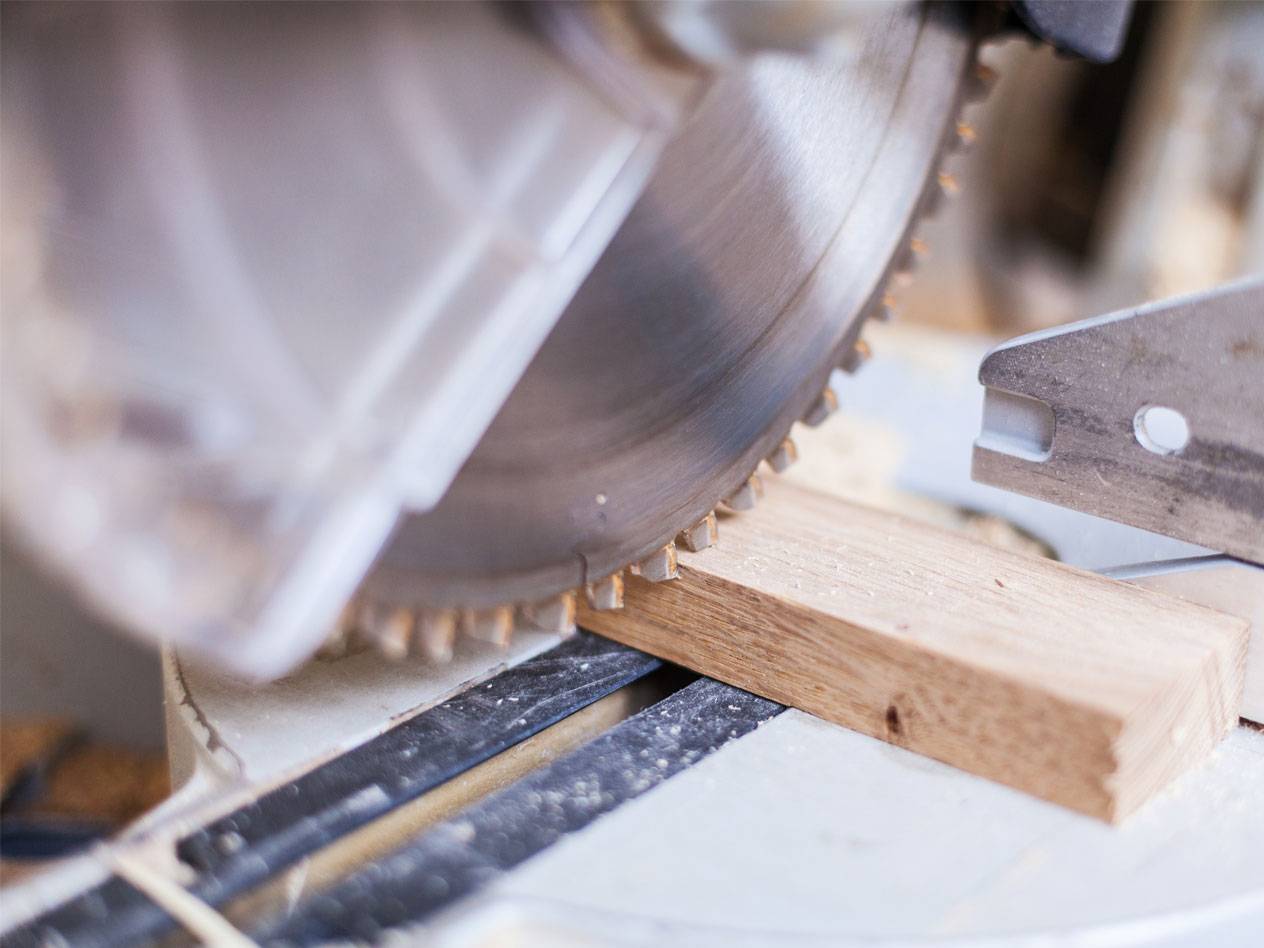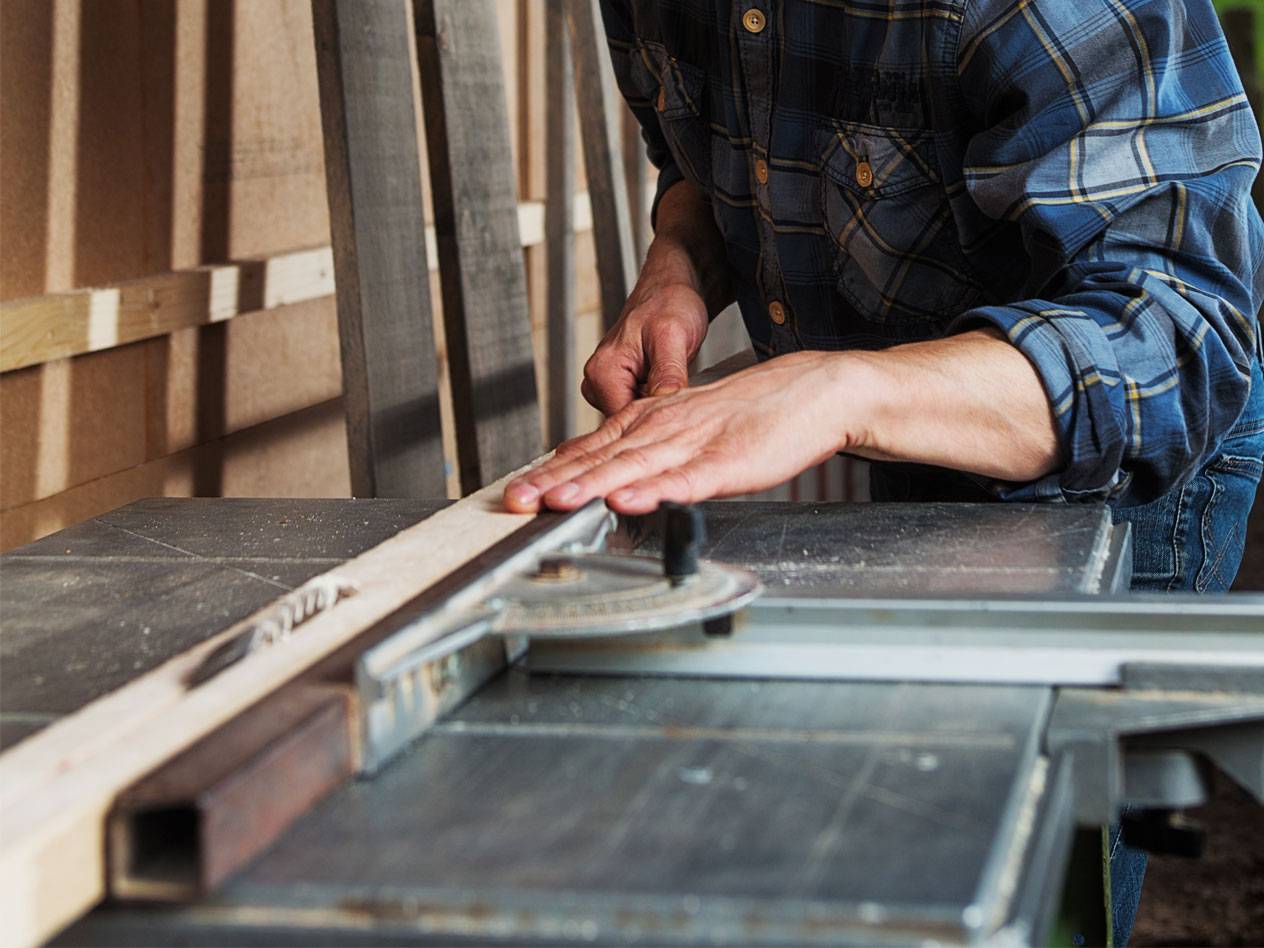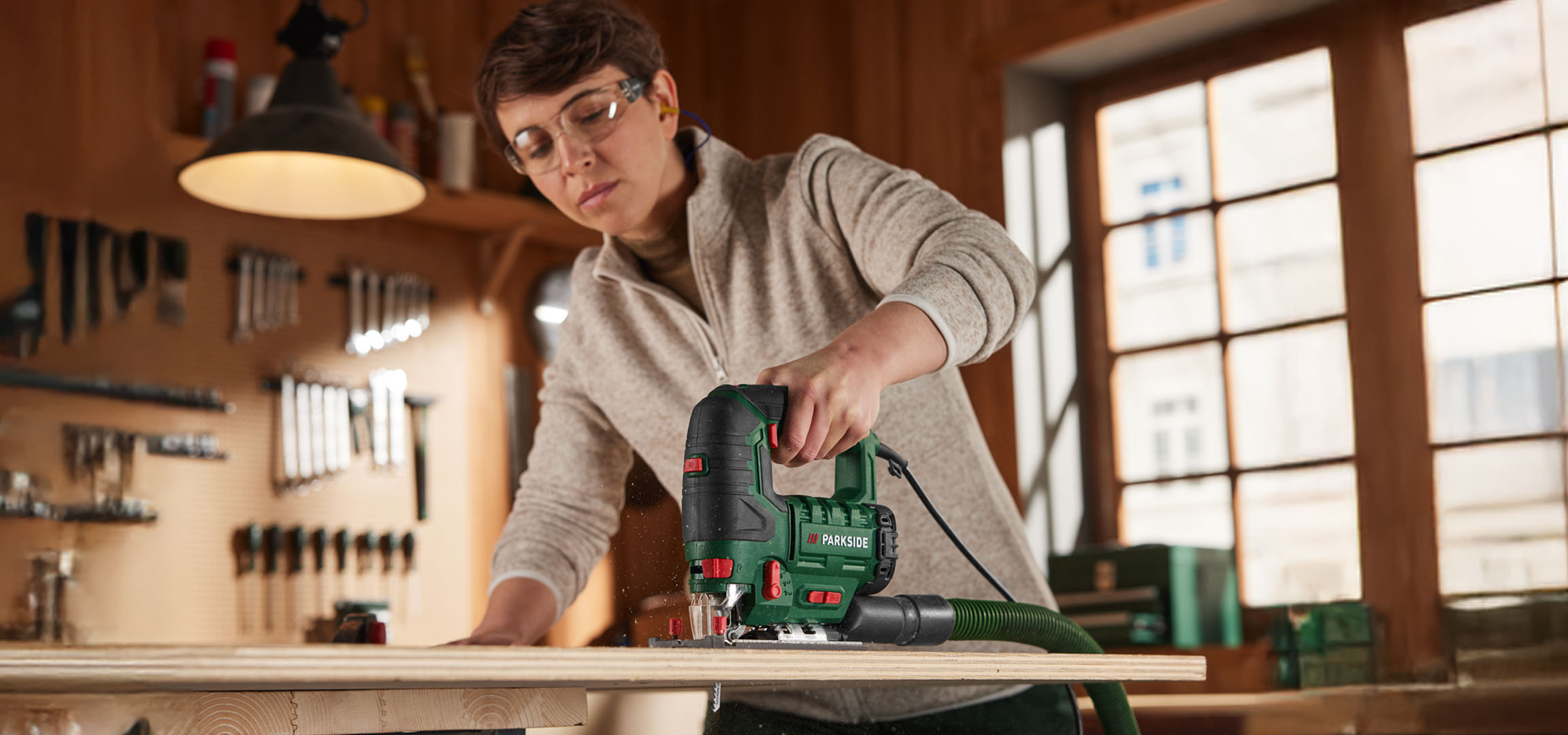Beams, boards, shavings: sawing wood made easy
Wood is the most widely used material for DIY work. There are a few points to bear in mind when sawing wood. Choosing the right wood saw is a crucial point in order to achieve the best result. The following guide reveals which saw is suitable for which purpose and other tips.
Contents
- Special tool and all-rounder
- Choosing the right saw for the job
- Useful tips for sawing wood
- Noise pollution from sawing work: How long can you saw wood?
- Summary
Special and all-rounder tools
Sawing wood can take many different forms: fine and rough cuts, straight and curved, from the edge of the workpiece or in the middle: There is a special tool for every job. Whether electrically operated or manual, every tool has its place. But there are also practical all-rounders.
Select the right saw for the job
Which saw is the right one depends primarily on three criteria: Size of the workpiece, precision requirement and cutting shape. The following application examples for different saws range from rough work with a chainsaw to filigree work with a scroll saw.
Tip
There are universal saw blades for woodworking that can be used for almost all types of wood. Special blades are only required in rare exceptions.
Sawing firewood for fireplaces and wood stoves
Firewood requires no precision work. Frayed edges and unclean cuts do not play a role here. The chainsaw is therefore the ideal tool for this application. It saves time and energy. Alternatively, firewood can be split in the traditional way with a hatchet or axe.
Can I cut wood from forests and parks?
In some locations, private individuals are permitted to cut firewood for their own use. But when can wood be cut in the forest or park? This can vary from season to season. To be on the safe side, it is best to ask a responsible forester.

Cutting beams and boards
Wooden beams can also be cut with a chainsaw, but it is difficult to achieve an even cut surface. The cross-cut saw is better suited for this purpose. It can be used for miters and cuts beams, boards and laminate evenly.
Processing wooden panels
Plywood, OSB or MDF boards are best processed with a circular table saw. Alternatively, a plunge-cut saw, which is guided through the material via a guide rail, is also suitable. For thicker boards, on the other hand, a hand-held circular saw is required. It makes deeper cuts possible, but is less precise than a plunge-cut saw or circular table saw. Sawing horizontal wood is then no longer as precise as with a circular table saw and plunge-cut saw.

Sawing figures out of wood
A fretsaw is best suited for cutting complex shapes with corners and curves. If only straight lines and angles are required to be cut, a jigsaw or band saw will suffice. Although round cuts are also possible with these, the result is usually not very clean. Very complicated and angled shapes may require carving work.

Useful tips for sawing wood
If particularly clean cut surfaces and edges are required, adhesive tape can be applied to the wood surface. This prevents the material from fraying. This applies in particular to veneered wood. Tip: The sharper the saw blade, the better the result.
Any shape cut should be marked out in pencil beforehand. Practical templates and cutting patterns are helpful.
If you need to cut at an even angle, a tilting saw is recommended. This function is mainly found on plunge saws, chop saws and scroll saws. Straight cuts are best achieved with a guide rail. Also note that the cutting speed sometimes needs to be reduced when working with wood. This can otherwise lead to ugly blackening and burns on the edges.
Noise pollution from sawing work: When can you saw wood?
It is not possible to say for how long you are allowed to carry out sawing work. This depends on the regulations of the local city. House rules may also contain regulations on quiet times. Loud electrical appliances may not be used during these times. Tools such as a fretsaw are usually unproblematic as long as the noise does not exceed room volume.
Summary
There are some wood sawing jobs that are particularly common in home use. With these few devices, the toolbox is equipped for almost all eventualities:
Chainsaw: For firewood and work in the garden.
Plunge-cut saw: For most straight cuts, as it can even be used to make cut-outs.
Scroll saw: For complicated shapes and fine cuts.
Angle grinder: A versatile tool. With attachments such as a cutting disk, wood can be sawn in a variety of ways.

